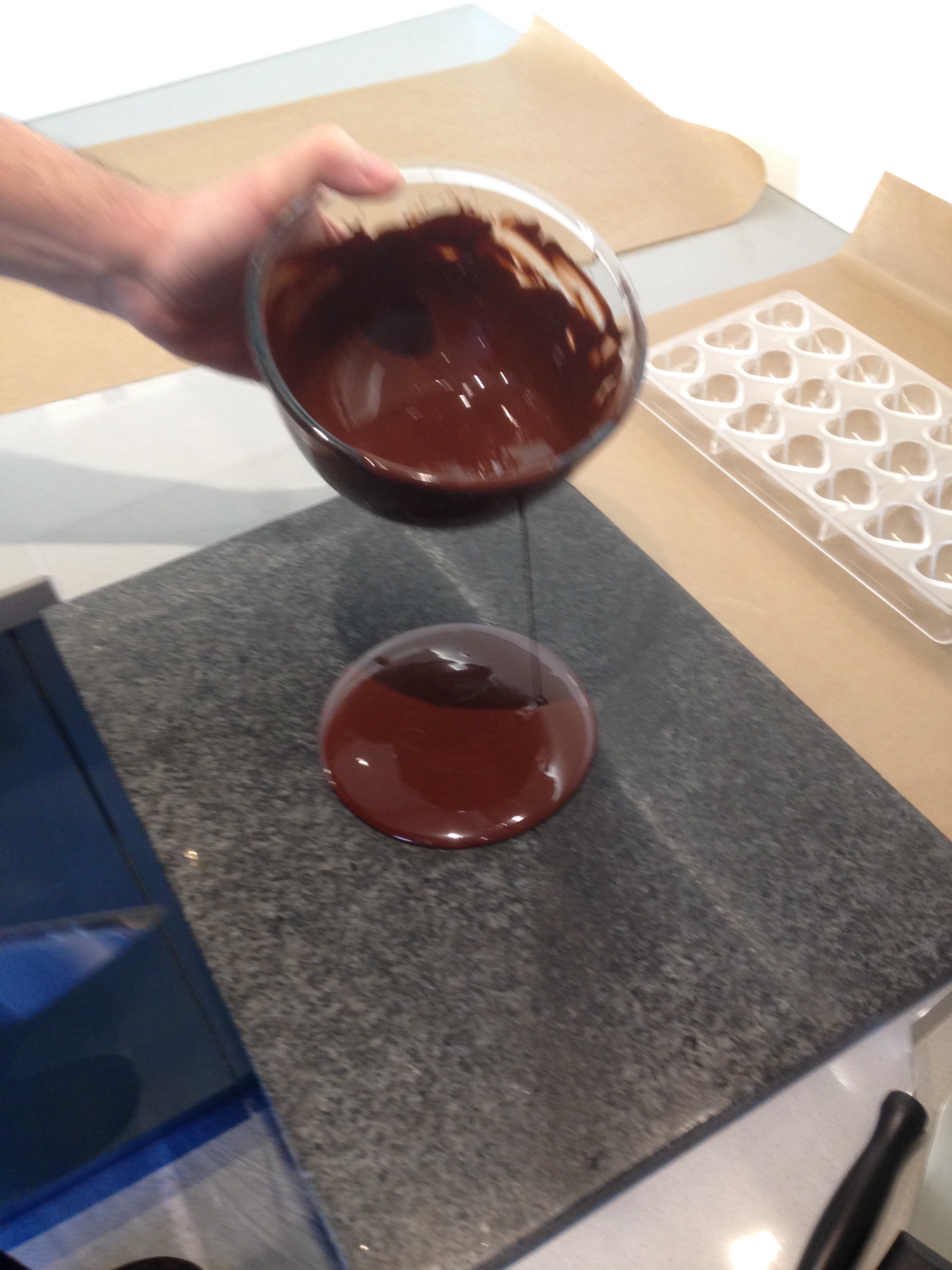- The process of tempering chocolate can look a little daunting, however it’s very rewarding but can take a little time and patience to master. Its a really precise and basically a chemistry process. The chocolate tempering process allows for hardening crystallisation to occur. Tempering chocolate gives it its distinctive snap and shine. The blog gives full details and you may find the video useful.
- Before you start tempering chocolate make sure that the kitchen is free of any moisture / steam. Check your bowl is dry before you start, if water makes contact with the hot melted chocolate it will make it seize and go very gritty. A top tip is to wipe dry the underside of the glass mixing bowl with a towel when removing from the saucepan (bain marie).
- The method described is for dark chocolate but notes are included below for tempering milk chocolate and also white chocolate.
-
Equipment:-
- Chocolate tempering thermometer / thermospatula (Lakeland).
- Small Marble or Granite Tempering slab (Lakeland).
- Chocolate Scraper (Lakeland).
- 250mm long S/Steel Palette Knife (Lakeland).
- 200mm dia Heat Proof Glass Bowl (Pyrex).
- Small Metal Saucepan (to act as bain marie).
Method for Dark Chocolate:-
1 Place the finely chopped dark chocolate into a heat proof glass bowl and place over a barely simmering saucepan of water (bain marie). Ensuring that the water does not touch the bottom of the glass bowl.
2 Gently heat / melt the chocolate, stirring occasionally and checking the temperature regularly with a thermometer and when it reaches 55deg C (131deg F) remove the bowl from the saucepan being careful to dry the underside of the bowl. Now carefully pour two thirds of the melted chocolate onto a granite or marble tempering slab, keeping the remainder of the chocolate warm, in the bowl but off the heat.

3 Using a chocolate scraper work the chocolate from the centre to the sides of the slab and back to the centre again at least 3 or 4 times. Check the temperature as you work the chocolate, it needs to be lowered in temperature to 27deg C (80deg F). This is the temperature dark chocolate crystallises Now pour/scrape the chocolate back into the bowl (which is off the saucepan / stove) with the remaining chocolate and stir together. Check the temperature it needs to now drop to 30deg C to 31deg C (86deg F to 88deg F) as the optimum working temperature for dark chocolate. Dip the end of the palette knife into the bowl of chocolate and its should set smoothly with a slight shine.
Notes on Tempering Milk Chocolate and White Chocolate
Due to the different amounts of cocao solids the temperature at stages 2 and 3 will need to be adjusted as follows:-
At Stage 2
The temperature should reach between 45deg C to 50deg C (113deg F to 122deg F)
At Stage 3
The temperature chocolate crystallises is 26deg C (79deg F)
The optimum working temperature is 28deg C to 29deg C (82deg F to 84deg F)